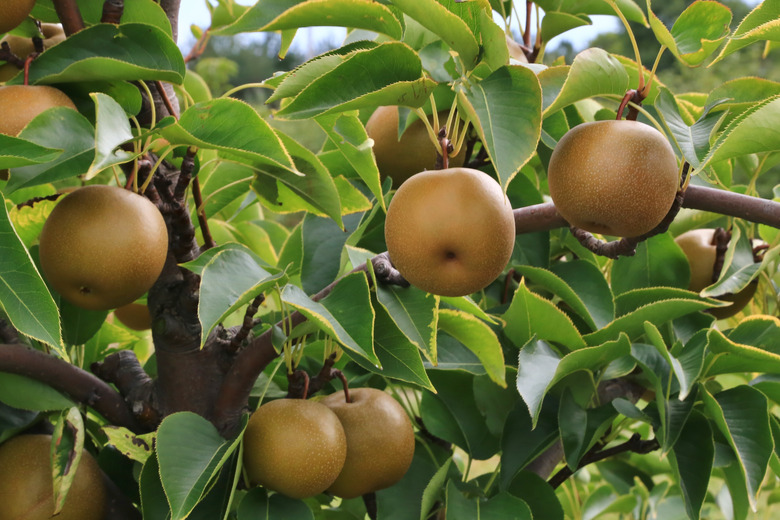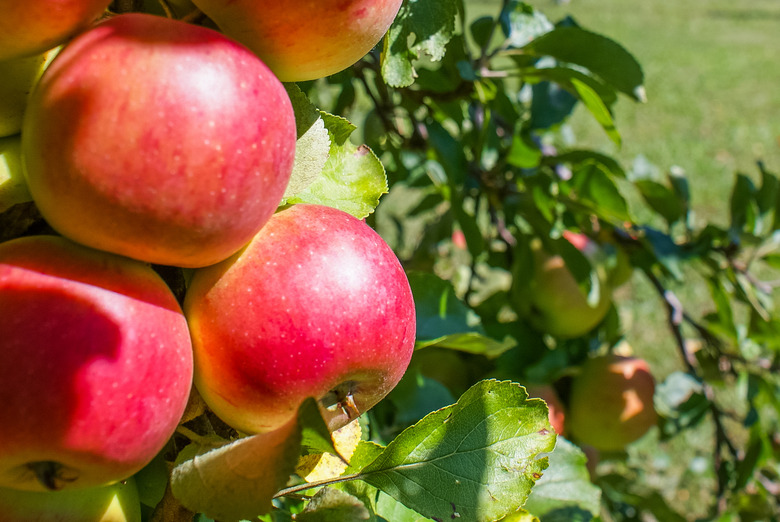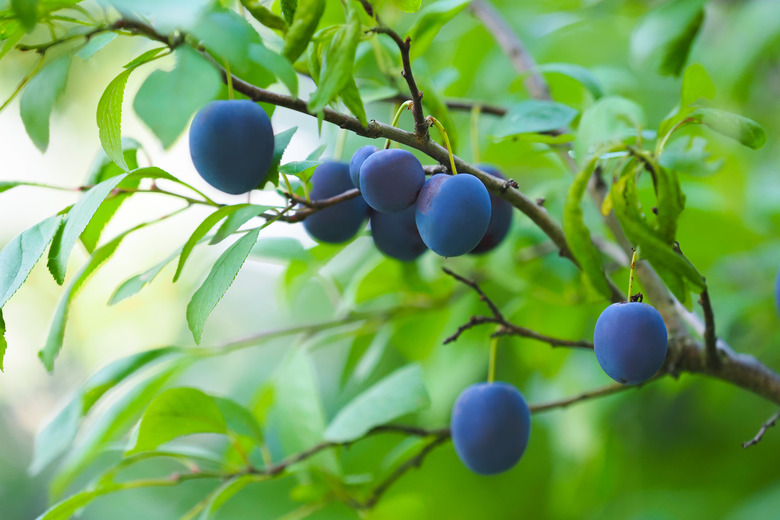3 Fruit Trees That Will Grow In Wisconsin
We may receive a commission on purchases made from links.
The long, cold Wisconsin winters make it challenging, but not impossible, to grow fresh fruit in your backyard. To grow fruit at home successfully, it's important to choose the right fruit trees for the Wisconsin climate to avoid damage to the delicate blossoms. Careful fruit tree selection can result in abundant fruit crops from your garden.
Basics of Wisconsin Growing Conditions
Basics of Wisconsin Growing Conditions
Fruit tree blossoms are affected by the late frost in colder areas like Wisconsin and other states in the upper Midwest, resulting in fruit trees that don't produce as abundantly as other areas. Fruit trees need a lot of care to grow and produce well; if the weather doesn't cooperate, this task can prove very difficult.
In Wisconsin, the optimal fruit tree growing zone is along the southern tier of the counties, going up along the shore of Lake Michigan, and up along Door Country. The optimal zone is also the one that stretches along the southeastern shore of Lake Superior. In all these areas, the lake alleviates the worst effects of the hard winter temperature.
1. McIntosh Apple Trees
1. McIntosh Apple Trees
Choose an apple (Malus domestica) variety that's hardy in Wisconsin, which is typically USDA hardiness zones 4 and 5. One of the best options for growing in Wisconsin is the McIntosh, which is the result of a chance seedling of unknown parents in Canada in about 1870. The apple is medium-sized with an almost completely solid, bright red skin. McIntosh is not only excellent for eating fresh but is also very tender upon cooking. However, the trees drop their fruit prematurely and are susceptible to apple scab.
Other cultivars that work in Wisconsin include:
- Gala
- Cortland
- Honeycrisp
- Haralson
- Red delicious
- Jonagold
Apple trees are best planted in full sun for optimal growth and production of fruit. The trees need early morning sun as this helps to dry to early morning dew and lowers the chances for diseases. The planting site should be well-ventilated and free from spring frosts.
2. European Plum Trees
2. European Plum Trees
Only European plums (Prunus domestica) are considered good for planting in Wisconsin. Avoid Japanese plums (Prunus salicina), which aren't winter hardy and can die when the temperature drops below 0 degrees Fahrenheit. Plums are stone fruit and belong to the genus Prunus, which is characterized by a hard inner seed or a pit covered with a fleshy outer fruit layer.
The best site to plant plums, or any stone fruit, is on a gentle slope, which will allow the cold air to sink into the adjacent lower areas around the trees. Hilltops aren't a good site as they could prove to be very windy and exposed. Plant the tree in fertile, slightly acidic, sandy loam soil. There should be good drainage in the ground since the tree won't grow well if its roots are wet. Choose a location that receives ample sunlight.
3. European or Asian Pear Trees
3. European or Asian Pear Trees
Pears are considered the easiest fruit to cultivate. The best pears for Wisconsin are European pears (Pyrus communis) and Asian pears (Pyrus pyrifolia). European pears have a typical pear shape with a rounded base and elongated neck while Asian pears look more like apples with a pear texture and flavor. Comparatively, the European pears are hardier than the Asia variety.
The best site for planting pears is a gentle slope, and hilltops aren't recommended. Pear trees will grow in all soil types except rocky and heavy clay soils, and there should be good water drainage. The trees prefer a slightly neutral to acidic soil and full sun for at least ¾ of the time during the day. Add sulfur to alkaline soil and lime to overly acidic soil to amend it. It's also recommended to add organic matter like leaves, manure, or compost as this improves aeration, tilth, and water-holding capacity in the soil.



